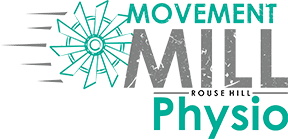Around 80% of adults will experience some sort of lower back pain (LBP) within their lifetime.
Risks:
- Age
- Most LBP occurs between 30-50 years of age
- Older adults will tend to have loss of bone strength and can lead to degenerative changes
- Younger children may also experience back pain (pre-teen/teen) when carrying heavy books/bags around
- Genetics (some forms of back pain have a genetic component)
- Overweight/weight gain
- Occupation/occupational risk factors
- Sports
- Lifestyle factors
Lower back pain (LBP) can be classified into 3 main categories:
- Serious Pathology
- Radicular symptoms
- Non-specific LBP
- Serious pathology can include things such as cancer, spinal cord issues (cauda equina), infection, vertebral fracture, etc. These make up for around 1% or less of LBP.
- Radicular symptoms can include pain/altered sensation within the bottom of down the leg. Altered sensations could include Pins and needles, tingling, or numbness. Radicular symptoms account for roughly 5-10% of LBP cases.
- Non-specific LBP accounts for 90+% of LBP cases and are musculoskeletal in nature (relating to muscles, bones, joints, etc).
Time frame:
- Acute- (a few days- few weeks)
- Sub-acute- (between 4-12 weeks)
- Chronic- (12 weeks +)
Some of the conditions commonly seen and treated in clinic:
- Joint dysfunctions
- Radiculopathy
- the nerve roots in the lumbar spine are being pinched and potentially leading to altered sensation
- Muscular imbalance
- The muscles around the spine have become overloaded and tight which leads to weakness in the back
- Disc bugles
- Extension Dysfunction
- Sacro-iliac joint conditions
- Sciatic pain
An important note about LBP is that a lot of the time there are underlying issues that have been leading to the back pain. When it comes to treating LBP we need to address these underlying issues within our treatments and rehabilitation in order to prevent further LBP in the future. For example if you have poor posture sitting at work 8 hours/day there is a good chance you will have stiffness in your upper and lower back, tightness in the muscles surrounding the spine, poor pelvic control, poor posture and weakness in surrounding muscles (glutes and core). In order to assist with the LBP and prevent issues in the future we need to address all of these issues.
A large factor in LBP is weakness in glutes (bottom muscles) and transverse abdominus (stomach muscle). These areas, when activated, can help to offload the spine and provide support. They are extremely important when performing tasks that require load (e.g. lifting shopping, picking up children, lifting at work).
HOW CAN WE TARGET THESE AREAS?
In the clinic we offer Pilates classes that focus on strengthening core, activating glutes, pelvic control and improving posture. These factors are extremely important to those with LBP as it targets many of those factors mentioned above that contribute to LBP. Pilates is the most efficient way to learn how to safely build up strength and control in order to lower the risks of getting LBP as well as assisting recovery with current LBP.
Takeaway message:
Lower back pain effects 80% of adults during their lifetime and there are quite a few risk factors for it (some you can modify and some you cannot). Knowing the cause/s of your lower back pain can assist with recovery as well as future prevention. Improving your posture, strengthening core and activating glutes are vital aspects in the prevention of lower back pain and Pilates is a great way to learn all these factors in the one place.

